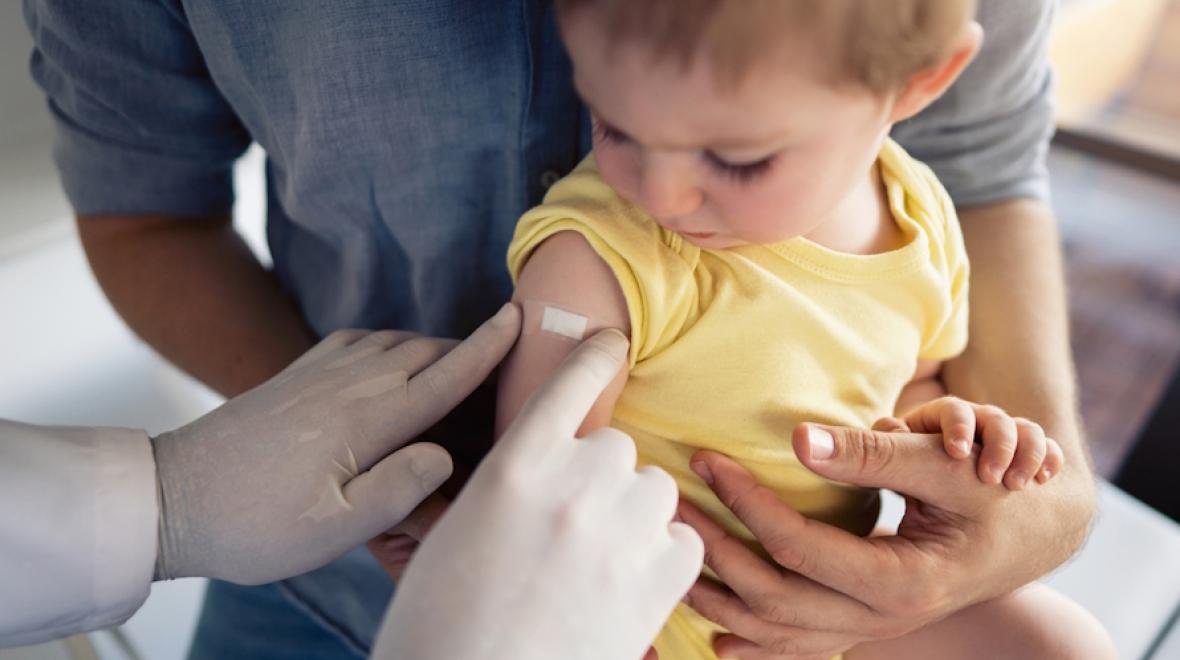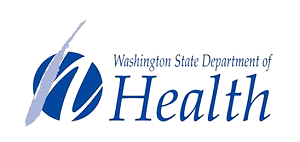
Editor's note: This article was sponsored by the Washington State Department of Health.
Last year, the United States experienced unusually high cases of respiratory syncytial virus (RSV), an infection that’s the leading cause of hospitalization for infants.
Thanks to a recently approved medication, nirsevimab, parents will be able to increase protection for their babies in the future, hopefully as soon as this upcoming fall and winter respiratory season. Nirsevimab is an injection that may reduce the risk of RSV-related hospitalization and healthcare visits in babies by about 80%, according to the Centers for Disease Control and Prevention.
While this new RSV antibody injection is exciting news for parents and providers, there has been a concerning decline in overall childhood vaccination rates. Those lower rates create a higher risk for illnesses like measles to make a comeback. As we head into the respiratory season, pediatric health providers are advising that children stay up-to-date on all of their vaccines, including their flu and COVID vaccinations.
A new opportunity to prevent RSV
Dr. Mary P. Fairchok, a Tacoma-based pediatric hospitalist and infectious diseases physician for Mary Bridge Children's Hospital, expects the new antibody injection to reduce the burden of RSV on young patients – and the healthcare system. Each year in the U.S., an estimated 100 to 300 children younger than five die as a result of RSV while tens of thousands are hospitalized. Most infants that ended up in the intensive care unit for RSV last fall were previously healthy and born at term, according to a new study from Vanderbilt University Medical Center.
Nirsevimab is an injection, but is different from a vaccination. Instead, it is an antibody that stimulates the immune system long enough to get vulnerable young patients through the height of the RSV season.
Another very effective protective antibody against RSV, Synagis, has been available for years for infants. Because of costs, though, that option has only been available for infants at the highest risk, such as those born prematurely, Dr. Fairchok noted. The medication also requires monthly dosing, another drawback for many patients. Having the new option available to so many young patients is an exciting development in pediatric health. “This is big news,” Dr. Fairchok said.
What’s next for COVID?
Staying up-to-date with COVID vaccinations are still important, too, she cautioned. Vaccinations can protect against severe illness, long COVID, as well as reduce school and daycare disruptions.
As the country experiences an uptick in COVID cases, that vaccine can help children “face the disease with a coat of armor on,” Fairchok said.
This fall, children will likely be eligible for an updated version of the COVID vaccine targeting the latest Omicron subvariant. September and October are also the best times to get the updated influenza vaccine, timing that offers the best protection for the season ahead, the CDC notes.
Keep up on routine immunizations
While waiting for those updated vaccinations, it’s important to keep children on schedule for routine childhood immunizations, health experts say.
The COVID-19 pandemic — and the lockdowns, school closures and limited health care visits that accompanied it — created widespread delays to routine well-child visits and vaccinations. In the US, like in Washington state, childhood vaccination rates have slipped in recent years.
The reasons for the decline are diverse, ranging from healthcare access delays to the widespread misinformation surrounding COVID-19 vaccination, Fairchok explained. Those drops are problematic since the country’s lower vaccination rates could lead to outbreaks of measles, pertussis (whooping cough) and other highly-contagious illnesses. Late last year, for example, an Ohio measles outbreak sickened 85 children, with 36 requiring hospitalizations.
Local children falling behind on vaccines
Locally, Washington has seen a similar decline with vaccine coverage declining in all age groups other than 13-to-17 year olds, according to a 2022 report.
That trend is reflected in local pediatrician Dr. Basma Raees’ experience, too. Before the pandemic, about 90% of her young patients were following suggested vaccination schedules. Now that number has dropped to just 70%, said Raees, who works with Evergreen Pediatrics in Kirkland.
On a recent weekday afternoon, Raees met back-to-back with three families who were hesitant to vaccinate their children for childhood illnesses such as measles and whooping cough. The COVID vaccine and the widespread misinformation that circulated had spilled over to routine vaccinations.
“We feel sad about it,” she said. “One bad social media post can spoil it. There’s too much misinformation.”
The decline is troublesome since unvaccinated children are out in the community, attending day care and school, she explained. Without the protection of vaccines, they’re vulnerable to potentially dangerous illnesses while also raising the risk of infecting infants and other people unable to be vaccinated.
Declining numbers increases outbreak risk
While figures vary for each disease, measles spreads so easily that immunity in the community requires about 95% of the population to be vaccinated. The United States overall has dipped to 93% of people who are vaccinated, while Washington state has also recently dipped below that 95% threshold.
“We’re really ripe for an outbreak in Washington state,” Fairchok said.
Measles is so contagious that one person can spread it to 9 out of 10 people around them if they are not protected. In a closed space like a classroom or daycare, the virus can linger even for two hours after the infected person leaves.
The infection commonly causes a high fever, cough, runny nose and a rash that covers the entire body. Complications include ear infections, pneumonia and encephalitis, or brain inflammation. Globally, 128,000 people died of measles in 2021, mostly children under age five, according to the World Health Organization.
Vaccination is highly protective against measles with two doses about 97% effective. Previously the United States’ higher vaccination rate made these infections rare. But, with vaccinations dropping, that’s changing.
Addressing misplaced fears
For physicians who remember life without certain vaccines, the drop in vaccinations is frustrating. During her days as a young physician, Fairchok recalls seeing young patients with a bacterial infection known as Hib, a disease which can cause inflammation of the brain lining and spinal cord. Before the vaccine was created, about 20,000 young children in the U.S. got serious Hib disease and about 1000 died, according to the CDC. Now, the vaccine is “wildly successful” in preventing that illness, Fairchok said.
When it comes to vaccine hesitancy, Fairchok offers the metaphor of a seatbelt. There is great evidence that safety belts are effective and reduce fatalities. While some may find the seatbelts themselves uncomfortable, when used correctly, they save lives. That is the same logic for vaccinations: they’re safe and effective and reduce fatalities.
“It’s a misplaced fear to be thinking of the problems with the vaccine itself,” she said.
When faced with so many disparate sources of information, Fairchok recommends turning to trusted sources, such as the American Academy of Pediatrics (AAP) and your primary care provider. AAP strongly recommends on-time routine immunization of all children and adolescents and offers a schedule detailing that timeline.
“Don’t go down the Google holes that can be alarmist and inaccurate,” she said. “I would trust in the vast bulk of people trained in these areas rather than the outliers.”
|
Sponsored by |
|
|












